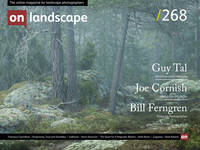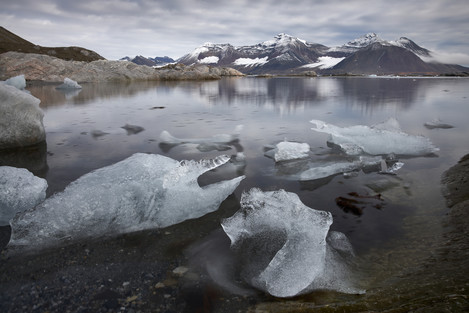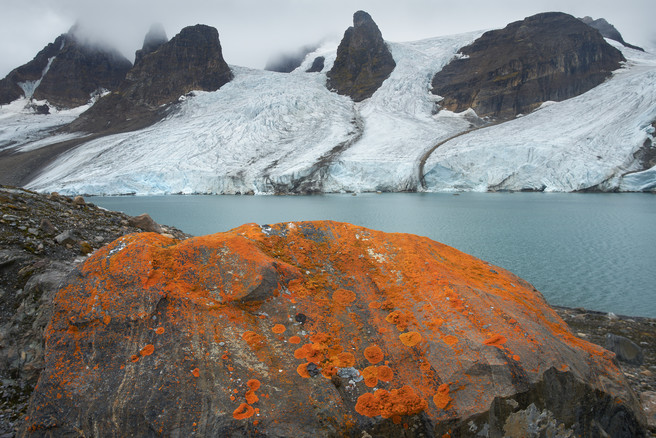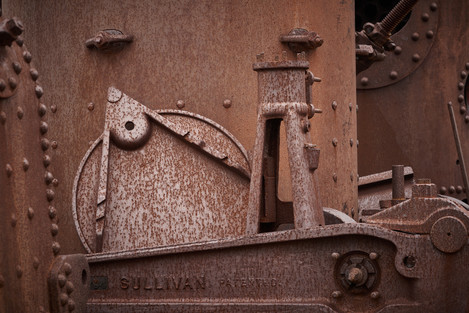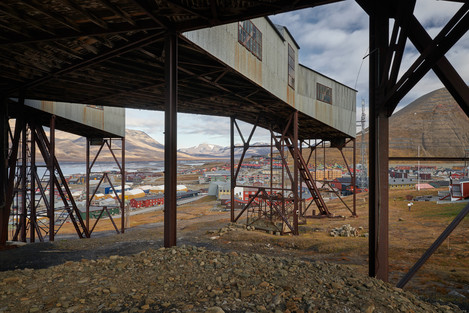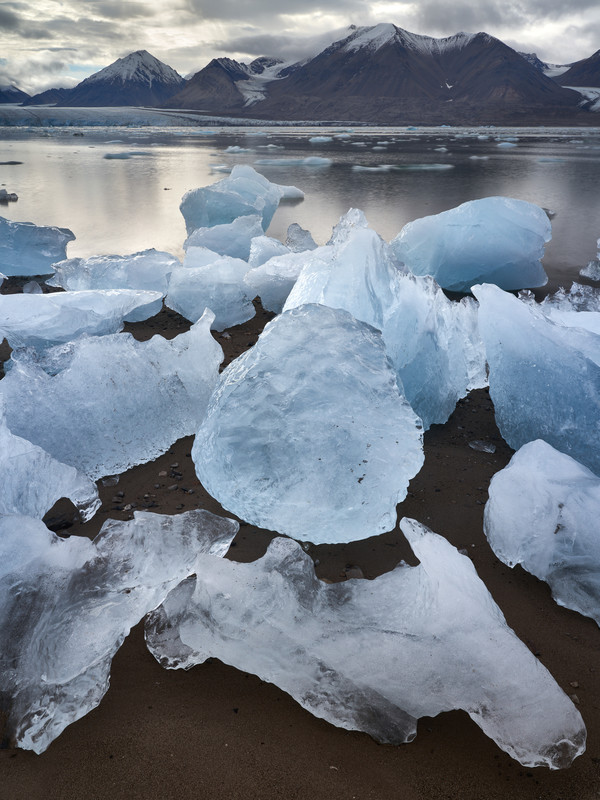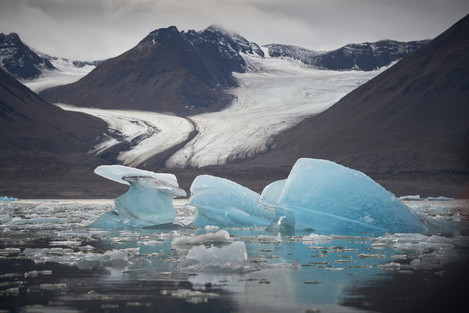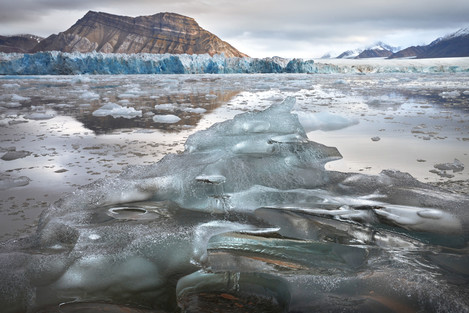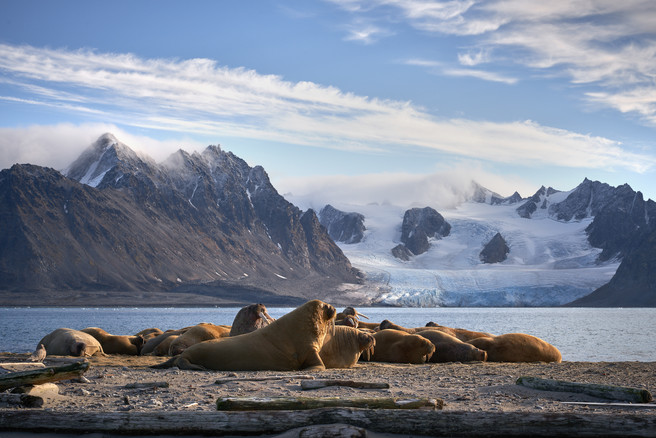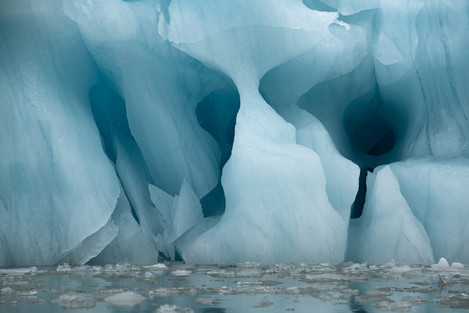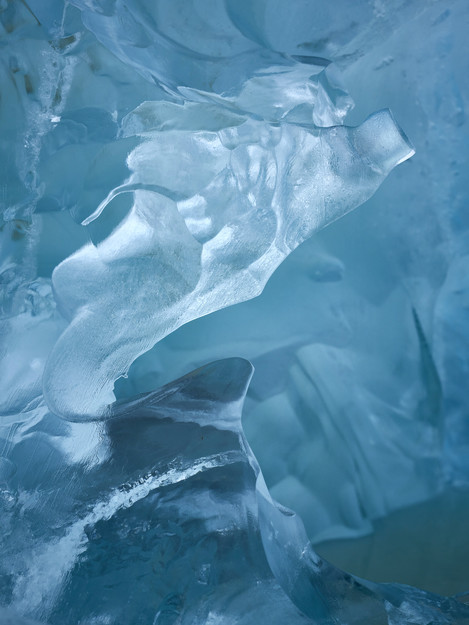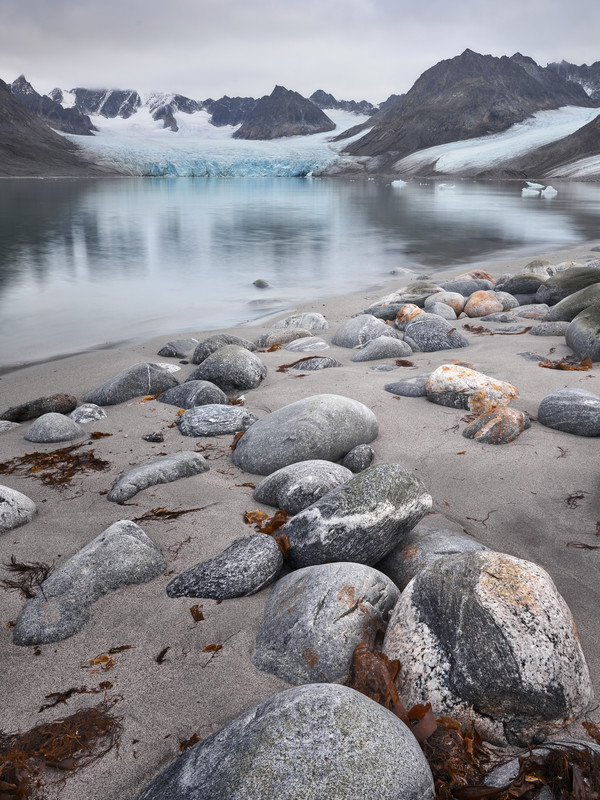The Shrinking Polar Experience
Over the last ten years, my travels to the polar regions have been, in no particular order:
- A photographic inspiration of icebergs and phenomenal wildlife: a picture and story resource like no other;
- An opportunity to deepen my understanding of and connection with these unique regions of the world, scientifically, historically and culturally;
- A chance to work with some of my closest friends and meet many wonderful people who travel with us.
- A way to continue making a living as a photographer.
The pandemic years brought an abrupt halt to these travels. For over two years, I did not set foot in an airport, which, needless to say, was a relief. Meanwhile, I made the decision to turn down all further offers to travel to Antarctica. My memories from three visits there may be fading, but the carbon footprint associated is so great that, in all conscience, it does not feel right to return. Meanwhile, Russia’s invasion of Ukraine makes returning to the Russian Arctic (where I have also been three times) an unthinkable prospect.
Closer to home and still accessible in distance terms are Greenland and Svalbard. Svalbard is the Arctic archipelago north of Norway made mythical by Philip Pullman’s His Dark Materials trilogy. Two opportunities to go this year were too good to refuse. Although not far apart chronologically, these two journeys proved to be very different experiences…
The Ocean Adventurer is an ice-strengthened ship with accommodation for a hundred-plus passengers and a large crew. We boarded at the end of June, still with the shadow of covid infections following our every move. Covid passports, vaccination boosters, PCR tests just before travel and lateral flow tests for all on arrival.
Landscape photographers will note that the dates of this tour, 29th June - 8th July, are only a week or so away from the midsummer solstice. Since Svalbard lies halfway between the Arctic Circle and the North Pole, that means 24-hour daylight, with the sun describing a gentle oscillating arc around the sky, never very high in the middle of day, but equally not even very near the horizon at midnight. It’s a curious rhythm that takes some getting used to. It also means that landscape photography is totally dependent on the weather, the diurnal cycle offering little variety and no darkness.
Most of our passengers were followers of Mark Carwardine, our brilliant photographic leader, and wildlife was their main focus and interest. For wildlife photography, 24-hour daylight could arguably be considered only an advantage. I have learned much from travelling with wildlife photographers over the years, and Mark in particular. Dedication to understanding the birds and animals and their life cycles is essential. And such photography focuses on the behaviour, expression and choreography of ‘the moment’. The downside is that without animals or birds, there is nothing exciting to photograph! This is particularly critical in the Arctic, where the superstar creatures are so elusive. In Svalbard, these include walrus, various seal species, Arctic foxes, many types of whales, and polar bears.
For some wildlife enthusiasts, polar bears are the photographic highlight of their lives. It puts a lot of pressure on any voyage expedition leader to find these majestic animals. On this early July voyage, we saw just one polar bear. As sightings go, it was a good one. We watched her foraging on a small island and then enter the sea to swim and continue the hunt elsewhere. Polar bears do commonly explore and travel on land, and increasingly are forced to as the sea ice that is their main hunting habitat shrinks. Around the Arctic Ocean bears are becoming increasingly marginalised by habitat loss and, in some areas, trophy hunting. The chances of seeing them will also inevitably decline.
What I failed to mention was that two other ships had found the same bear before us. We were in a bizarre predicament. Our ship’s ten zodiacs (each with ten passengers) were essentially third in line behind a group of twenty or so more zodiacs already observing the same single animal. Although everyone was hoping for a wonderful photograph of a bear in her Arctic home, the reality was that half the time another zodiac lay between us and a clear view of the bear. This was the wildlife equivalent of standing on the rim of the Grand Canyon at sunrise with three hundred other tripod-wielding photographers. Instead of a gigantic landscape to photograph, there was one solitary animal hunting for scraps to survive on until the sea ice returns in several months time.
The voyage had many enjoyable excursions and highlights; but the irony and meaning of that one and only bear encounter has stayed with me.
By late August, many of the travel hassles and covid travel precautions had eased. Our second voyage was aboard the MV Antigua, a small ship equipped with three masts and sails, which were used whenever possible, lowering our collective carbon footprint. This expedition was organised by Daniel Bergman (Iceland), known to many On Landscape readers, and led by the polar bear expert, writer and photographer Morten Jørgensen. Daniel, David (Ward) and I were the lucky guides for a landscape photography passenger group of 17. Fortunately for landscape photographers, there is never an absence of subject matter, especially somewhere like Svalbard. Such a small group made excursions and landings much easier, and they lasted longer.
Perhaps ironically, we had just as many wildlife encounters on the later ‘landscape voyage’, and because we took landscape-photography-time over things, we generally made better wildlife photographs too! We saw just one polar bear on this latter tour as well. It is easy to extrapolate from such a small number of encounters that the polar bear is vanishing, but that would be an anecdotal assumption. Some tours have had the good fortune to see quite a few animals while around the Svalbard coast this year.
The September voyage was managed to minimise travel time at sea and maximise our time on land or on Zodiac* excursions. The scale of Svalbard’s landscape is quite familiar, for in size and shape, the mountains and valleys are like Scotland’s, only with glaciers, and at least for now, no trees and not much vegetation. It is an insight into how Scotland might have looked like around 17,000 years ago, before the end of the last Ice Age. Or perhaps right at the end of the Ice Age, during a period of rapid warming, because make no mistake, that is what is happening now. Weather conditions were similar to what we would expect in a cool Scottish summer and gave a wide range of lighting conditions.
Warming at a faster rate than anywhere else on the planet, Svalbard now has quite mild summers, although temperatures can also fluctuate wildly and are prone to do so. We spent a lot of time in light clothing on both voyages. Most of the icebergs we encountered were relatively small, as glaciers and ice shelves here are on a modest scale; and those we did encounter were in rapid thaw. Yet the surviving glaciers and wildlife and the almost untouched landscape are uniquely polar. It remains a place of exceptional beauty and photographic appeal.
Travelling to the Polar Regions
Although this has largely been a travelog so far, a reason to write this article has been to question my own justification to continue travelling, especially to the polar regions. While I am now forgoing the appeal of the deep south, opportunities to see the wonders of the north continue.
That’s the part of me that identifies as a wandering adventurer who still finds pleasure in the unfamiliar and spectacular landscapes of the world and loves the enriching experience of seeing these wonders first hand.
But there’s another part that doubts the validity of these motives, that questions my actions and mocks my sense of entitlement (to travel). The personal carbon footprint of air and ship travel is undeniable and directly contributes to climate change and also habitat disturbance that marginalises the wild animals that we love to see and whose future is increasingly vulnerable. The truth is, we now sail ships in bays where glaciers once were in the very recent past. Change is well and truly upon us.
As far as I can tell, there is no balance sheet between good intentions and the unintended environmental consequences of travelling to fulfil them. It’s all tempting to see this as a First World Problem. But that doesn’t make it go away. Internally I am conflicted. Having a son who is an Arctic geo-physicist, I am regularly reminded of the effects of fossil fuel emissions.
In the global bigger picture, our personal impact seems microscopic, so it is tempting to believe that it’s not so important. Especially if platforms such as On Landscape can raise awareness and consciousness about these issues. For this reason, I was delighted to see Theo Bosboom’s recent article on these pages. If we do carbon offsets and contribute what we can to bring positive change, does that not justify bearing witness?
The past, present and future Arctic
Human exploration in the Arctic is still a relatively recent one, although humans have also lived in the regional margins for thousands of years. As Arctic exploration excited the popular imagination two hundred years ago, it was as a place of impossible, terrifying, other-wordly beauty. It became immortalised by both European and North American painters as perhaps the most sublime of landscapes, in the original sense of the word sublime. It was also a place where fortunes could be made, especially from hunting whales. And the search for a north west passage promised to accelerate trade with the Far East, a potentially vast new source of wealth. Even then it was a place of contested ideas in the western imagination.
Whale hunting took the great whales very close to the brink of extinction. It is a near-miracle that the global moratorium of 1982 happened and has finally started to bear the fruits of success as whale populations are gradually recovering globally (although unevenly and not everywhere).
But, since 1982, four decades have passed in which global emissions have soared as economies have prospered on the relatively cheap exploitation of fossil fuel. This is in spite of the fact that forty years ago, the science of the greenhouse effect was well understood and the risks of climate change well-disseminated. Climate change is amplified in the Arctic, and this has led inexorably to less and less summer sea ice. Additionally, there is an increasingly rapid loss of volume from the gigantic Greenland ice cap, the world’s second largest (after Antarctica).
Sea level rise is coming in part because of the Greenland ice melt and also due to land-based ice loss elsewhere in the world. As it rises, so ice shelves and tidewater glaciers face greater pressure and storm energy from the ocean, in addition to rising atmospheric temperatures. In the short and medium term, the momentum of change will mean further decay of these great ice stores and rapid erosion for coastal margins (and not only in the polar regions).
What will a future Arctic look like? It is thought that Greenland’s ice cap would take thousands of years to decay completely if it ever did so. With luck, human ingenuity and economic necessity will have turned the climate change tide by the end of this century. Perhaps future generations will still be able to experience the authentic Arctic world, a wonderland of ice, snow – and sea ice – as we have done. Whether the great animals will still roam here, especially the polar bear, remains to be seen. There is no doubt its disappearance would mark a symbolic failure on our part. The polar bear is an adaptable and resilient creature whose evolution has survived the ebb and flow of Ice Ages. It is not an animal to give up easily.
Final Thoughts
We surely know that it will require extraordinary levels of global cooperation if we are to mitigate and reverse the
For now, I wonder if the pictures we make in the Arctic are useful, with real value as a document of record. Although it is hard to reconcile the value of terrestrial photography scientifically when NASA can regularly blow our minds with space-based survey images and time lapses showing sea ice shrinkage. Is what we do simply a snapshot of a moment in time and place which will always inevitably be subject to change on our dynamic planet?
I suppose my willingness to continue these journeys is a mixture of sincere good intentions and purely selfish enjoyment. But at least while I still visit I can bear witness to the changes and feel part of the conversation. Either way I feel deeply grateful to have had the privilege to visit a region of the world whose wonder and wildness – for now – remain intact.
*Zodiac is the near universally-used brand of RIB (Rigid Inflatable Boat) that are the tenders used for all polar excursions away from the mother ship.

